Like Jane Rawson this year, I decided a few years ago to try reading in private for a while, rather than publicly rating and/or reviewing books on Goodreads or other sites. And it’s been working for me, this curving of my arm around to hide the page as I read. In 2016, I kept track of my reading in a small green notebook — one book to a page, with little room for notes. For maybe four out of five books I read, I rated them when I finished reading. Sometimes, but not always, I commented on my response to the book — but without going over the page, so I didn’t write much.
At the end of the year I threw everything into a spreadsheet (I know how to have a good time on New Year’s Eve). Let me share some (as they say) metrics.
I read (and finished) 85 books in 2016. In addition to those 85, I read one novel in manuscript (I also read my own novel in manuscript what felt like, and indeed may have been, a hundred times). Three of those 85 books I read twice in 2016; seven others I had read before. Three short-form books aren’t included in the 85, though two novella (novellae? Novellas?) are included.
- Written by women: 60 of 85
- Fiction: 61 of 85 (57 novel, 2 novella, 2 short fiction collection)
- Nationality of author: 31 Australian (20) or New Zealand (11); 28 North American (2 Canadian); 26 British (21), Irish (2) or European (3)
- Australian women writers (if you don’t know it, check out the AWW Challenge): 14 of 85
- Year first published: 40 in last two years; 51 in last three years; 64 in last ten years; range 1865 to 2016
- Library vs owned: 38 from library (e-book or print), 47 owned (gift or bought, new or secondhand, e-book or print)
- Medium: 8 read as e-books (Kobo), remainder in print
- Reason for reading: 12 festival, 12 know the author, 15 research, 9 on prize lists; most other reasons are some variation on favourite author, great review, or recommendation; best/worst reason: ‘sucking up arse’
- Frequent authors: 17 books (20% of those I read/finished) were written by just four authors: Ann Patchett (5), Val McDermid (5), Jane Smiley (4), Lee Child (3) (yes, Lee Child, wanna make something of it?!)
I generally read more books by Australian and New Zealand writers than I did in 2016 (in 2015, for example, I read 38% Australian and 18% NZ, total 56% of books read; in 2016, 24% Australian, 13% NZ, total 37%). My 2016 reading had a much heavier than usual representation by US authors, due partly to my Ann Patchett and Jane Smiley binges, but also to several of the books (fiction and non-fiction) I read as research for my new novel. My reading in 2016 — as usual — was mostly fiction, and mostly novels. I’ve read few short stories, either individually or in collection, the last few years, and it’s something I intend to remedy. There’s a very heavy weighting towards recent books, with 75% published in the last three years.
The heavy weighting (about two-thirds of books read) towards women writers is about average for me. While the gender diversity of my 2016 reading was reasonable, that’s about the only diversity present. My reading in 2016 was very white, and very English-speaking (I read all books in English; only three were in translation), and I confess that’s not unusual for me. Must do better.
Beyond the metrics — my Super 8
Numbers are just the start, though. I had a really wonderful year of reading in 2016. I felt that I read so many so good books. Of those, here’s my Super 8: eight books — six novels, a collection of short non-fiction and one of short fiction — that rocked my reading world in 2016 (though there is a large crowd of other books I could as easily have included — more on those below). As always, I wish I’d made more notes, even written reviews, at the time of reading. But I didn’t, so here’s the list of books and some random anecdotes about how I came to them.
When I saw that Canadian writer Elizabeth Hay was coming to New Zealand for WORD Christchurch Writers Festival in August 2016, I looked up A Student of Weather (2000) on my bookshelf, a long-ago gift from a Canadian friend that (sorry, friend) it turned out I hadn’t ever read. I remedied that by reading A Student of Weather while I was in Christchurch at WORD, where I kept fanatically buttonholing anyone who’d listen, raving about how brilliant it was. I bought Hay’s latest novel, His Whole Life (2016), a few months later, and loved it equally.
Ann Patchett is one of those writers I’d never got around to reading — until the second half of 2016, when I read and loved five of her books, including two that make my top eight of the year. Brandy Scott recommended Patchett’s Bel Canto (2001) to me when we were sitting in the audience at Auckland Writers Festival waiting, as I recall, for Jane Smiley’s session, but it took me a few months to get around to reading what turned out to be my gateway to an Ann Patchett reading feast for the rest of 2016, including the equally wonderful Commonwealth (2016). Sidebar: I realise that, as I type this and as I read the book, I had an unshakeable image in my mind of the main character of Bel Canto — soprano Roxanne Coss — as Laura Roslin, President of the Twelve Colonies in Battlestar Galactica, one of the series we have been enjoying chez-nous this last year or so. I see that the marvellous Julianne Moore is due to play the character (Roxanne Coss, not President Roslin) in an upcoming film of Bel Canto. I can live with that.
I bought Beatlebone (2015) by Kevin Barry partly because I loved the cover (yes I am absolutely that shallow), partly because people raved about it (was it James Bradley and Jane Rawson who love-fested about this on Twitter?), but it was a good six or twelve months before I got around to reading it, and when I did, I loved everything about this mad book. The language, the music, the fractured madness, the screaming. Above all, the language.
I read Coming Rain (2015) by Stephen Daisley out of a sense of duty, not expecting to like it. It won the fiction section of the Ockham New Zealand Book Awards in 2016, so I thought I ought to read it on that basis alone. I met Stephen Daisley at Auckland Writers Festival 2016, and again at WORD Christchurch, and had several really good chats with him about Perth, and writing with one foot on either side of the Tasman (Stephen’s a Kiwi who’s lived in Western Australia for twenty-odd years; I’m a Western Australian who’s lived in New Zealand for twenty-odd years). He’s a thoroughly lovely chap, and I knew I’d see him again in Auckland at the National Writers Forum in September, so I thought I’d better read Coming Rain before then — but, argh, novel about shearers, blokes, a dingo for godsake…oh well, give it a go, I thought…but, my god, how I loved this book! Again, the language was beautiful, and a little bit strange. It felt like a deeply Western Australian book, really embedded in country. But clearly — as evidenced by its Ockham Award success — it speaks more widely than just to a Western Australian reader. Sidebar: Stephen Daisley will be in Wellington for six months in 2017 as the Randell Cottage New Zealand Writing Fellow.
I have been a fan of Helen Garner’s work for decades (see, for example, the piece I wrote for Annabel Smith about Garner’s short story collection). Garner is one of the reasons I write. Everywhere I Look (2016), her collection of short non-fiction pieces — essays, musings, memoir, columns, all in her beautiful, plain but extraordinary, careful language — held so much to make me pause, or nod, or cry.
I’ve been meaning to read Elizabeth McCracken for ages, but I didn’t get around to it until 2016, after her (fabulous) sessions at Auckland Writers Festival. Thunderstruck and Other Stories (2014) is a collection of short stories full of dead-end streets, death and disappearance, children missing parents and parents missing children. It’s very, very good. My notes say ‘I groaned with pleasure at last lines of first story’ (I am now resisting the urge to go and remind myself what those lines are, but clearly I found them pretty damn fine).
Super 16 (OK, more like 30)
There were so many more great books I read in 2016. I’ve listed my Super 8 above because I couldn’t pick two more to make a top ten — there were a good thirty more books I couldn’t choose between. Here are some of them, and some thoughts.
Memoir and essays — non-fiction generally — provided some great reads for me in 2016. I’d been looking forward with great anticipation to Sarah Laing’s Mansfield and Me (2016) (I talked about it in my literary postcard from Wellington for BBC Radio4 back in January 2016, which played again this Christmas), ever since I heard, some years ago, that she was working on this graphic memoir about Katherine Mansfield, writing, and, well, life. I read it in a single sitting — starting late one night, I read into the early hours of the next morning. It is as beautifully done as I hoped it would be. It’s longlisted for the Ockhams in the illustrated non-fiction category; fingers crossed.
I wallowed/luxuriated in Patti Smith’s beautiful 2010 memoir Just Kids, her story of herself and Robert Mapplethorpe. I re-read Kim Gordon’s Girl in a Band (2015), and found it even better the second time around. Robert Forster’s memoir Grant and I was very good, though it felt always as if much was being withheld from the reader (Forster’s November gig in Wellington at San Fran was absolutely brilliant — just a bloke and a guitar and a bunch of brilliant songs).
I also loved another, very different memoir: Tim Winton’s Island Home (2015), a landscape memoir/meditation. A book of memoir (wisdom? Recollection? Writing advice?) that surprised and delighted me was Still Life with Teapot (2016) by Perth-based New Zealander Brigid Lowry (disclosure: this was a gift from the publisher, Fremantle Press, that Brigid and I share) — my notes at the time of reading describe it as ‘juicy and random and funny. Wise re writing (and life)’. Another wise and beautifully written book by a Perth writer, Martin McKenzie-Murray’s A Murder Without Motive: The Killing of Rebecca Ryle (2016) (Sydney Morning Herald review here), I found disturbing, confronting and moving, as well as difficult to categorise (memoir? Very long-form journalism? Personal essay? True crime?). Disclosure, again: though we’re a generation apart in age, MMM and I are cousins (well, his dad and my mum are cousins, so I guess that makes us second cousins). Like everyone in New Zealand (e.g. review), I loved Ashleigh Young’s collection of personal essays, Can You Tolerate This? (2016) (quoting Grant Smithies, ‘If Ashleigh Young was a band, I’d wear the T-shirt’).
Other memoir/essay/non-fiction highlights of 2016 were Ann Patchett’s Truth and Beauty (2004) and This Is the Story of a Happy Marriage (2013), Deborah Levy’s beautiful Things I Don’t Want to Know (I ended up buying myself a copy of this, after borrowing it from the library so many times I nearly wore it out), Vivian Gornick’s Fierce Attachments (1987), her memoir about her relationship with her mother, which I bought after hearing her excellent session at Auckland Writers Festival, in conversation with Jolisa Gracewood (listen to the podcast), and the uncategorisably amazing and wonderful Syllabus: Notes from an Accidental Professor (2014) by the incomparable Lynda Barry.
On the fiction front, I read all three novels (Some Luck, Early Warning and Golden Age) in Jane Smiley’s Last Hundred Years trilogy in a heady gallop (appropriate for Jane Smiley, though I’ve not read her horsey novels) in the lead-up to her appearance at Auckland Writers Festival in May 2016 (listen to a podcast of the session). They were wonderful, romping reads, full of the great, rich spill of a family. Completely absorbing. I just wanted to stay in bed and read all day.
As well as being motivated in my reading by writers appearing at festivals, I was motivated by award long- and shortlists. In 2016 I set myself the challenge of reading all five shortlisted novels — Leap by Myfanwy Jones, Salt Creek by Lucy Treloar, Hope Farm by Peggy Frew, Alec Patric’s Black Rock White City, and Charlotte Wood’s The Natural Way of Things — for the Miles Franklin Literary Award. I met the challenge with a fortnight to go before the winner, Black Rock White City, was announced in August. All five novels were excellent, among my fiction highlights of 2016 (or 2015; I read The Natural Way of Things in late December 2015). I should add that one of my absolute favourite reads of 2016, Stephen Daisley’s Coming Rain, was longlisted for the 2016 Miles Franklin, but didn’t make the shortlist. Awards, eh?
I mostly loved Deborah Levy’s Hot Milk (2016), a novel that had a lot to live up to (her 2011 novel Swimming Home is one I love and am slightly obsessed with). It was an unsettling read in so many different and clever ways; there was an unsettling formality and oddness to the writing, particularly the dialogue. A few anachronisms jarred for me (a 25 year-old with an iPod? Screensavers with stars?). I feel the need to read it again, soon.
Other fiction highlights: Lucky Us (2014) by Amy Bloom (I loved its gaps, its fluid time); Jennifer Egan’s A Visit From the Goon Squad (2010) (clever and funny and sad, tricksy with time in a wonderful way); Lewis Carroll’s Alice’s Adventures in Wonderland (1865) (I re-read this as research for my next novel; I had forgotten how remarkable it is, how great a read); Ann Patchett’s State of Wonder (2011) (lovely lovely Ann Patchett, down the Amazon this time); Damien Wilkins’ Dad Art (2016) (clever, contemporary, funny, poignant, with the energy and exuberance you’d expect from a novel written in less than three months by a writer as good as Wilkins).
And a special shout-out to crime novels, murder mysteries and thrillers, which I love, and turn to for — is this strange? — comfort and security. My stand-out crime read this year (apart from Alan Carter’s forthcoming Marlborough Man, which I was lucky enough to read in MS — it’s excellent, and out later in 2017 ) would have to be Emma Viskic’s Resurrection Bay (2015). I am not alone in this opinion, as it won a swag of crime writing prizes in Australia in 2016. I loved the book’s hero, Caleb Zelic, and the book’s engagement with Auslan (Australian Sign Language) and language in general. And Fire Came Down, the second book in the Caleb Zelic series, is out in the second half of 2017.
It was a cracker of a reading year. And 2017 has started well, with Frank Moorhouse’s Grand Days (1993), the first novel in his Edith Trilogy. What were your stand-out reads of 2016? What are you looking forward to in 2017?
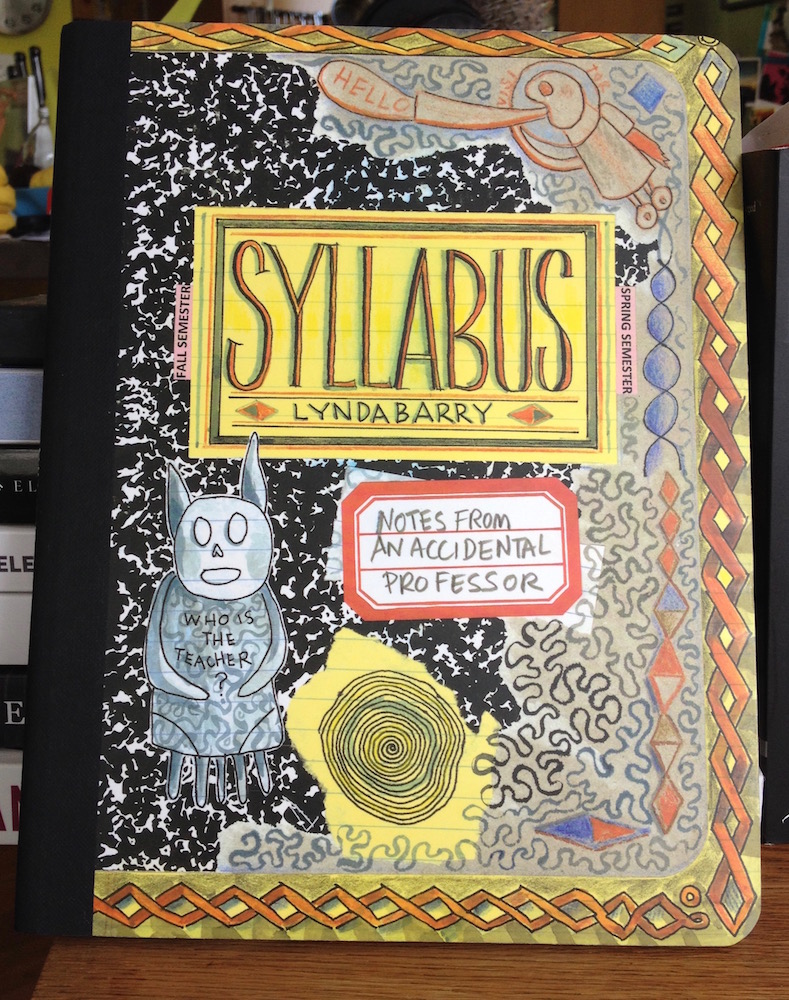
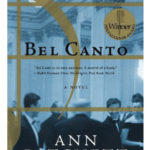
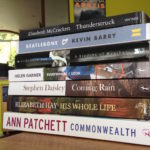
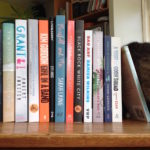
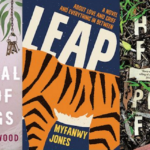
Thanks for the run-down. Always like to know the opinion of those I respect. If you like Daisley then I strongly recommend his earlier book – Traitor. I thought it was a knockout and much preferred it to Coming Rain. Your notes remind me of another great writer, Elizabeth Hay. I really liked her earlier work – Late Nights on Air. Hadn’t heard of the new one, His Whole Life so this must be sought.
I did a little review of my own year’s reading and along with Lena Gaunt (and I’m not just flattering you, it was on my very short list of favourites) were News of the World by Paulette Jiles, Mothering Sunday by Graham Swift, The Power of the Dog by Thomas Savage, All Passion Spent by Vita Sackville West and The Golden Age by Joan London.
Today I’ve just started The Hands by Stephen Orr. Early days but he strikes me as a writer who really knows rural Australian life. He and Daisley would make a great pair at a festival. Very impressive.
Looking forward to The Hope Fault. Wishing you another year of great reading – and writing.
Thanks so much, Robin.
I really do need to read Daisley’s Traitor – it’s high on the TBR list. And I’m aiming to track down all of Elizabeth Hay’s novels, having so loved the two I read in 2016. There was just something about her writing that hit me, you know? I’ll chase up Stephen Orr, too – I have yet to read him.
Well, I’m honoured that you listed my Lena in that fine company! I lo-o-oved Joan London’s The Golden Age (I re-read Gilgamesh and The Good Parents, too, after I read The Golden Age in early 2015 – all brilliant). Mothering Sunday’s on the TBR list, and I’ve noted your other faves.
All the best – and here’s to another great year of reading (yes, and writing) in 2017.
What a great post! Sorry I didn’t see it til now – I was wandering around in the outside world in Dec/Jan, and still catching up. I also read and loved ‘Thunderstruck’ last year. And I love the ‘sucking up arse’ category – one which I definitely should have put some of my reading into, but which I euphemistically tagged ‘research’. And yep, I would not shut up about ‘Beatlebone’. I’ve since not shut about ‘Solar Bones’ and ‘Pond’ if you want more in a similar-ish vein.
Oh yes, I saw (on FB) some of your wandering around in the world — lucky do-er! Rightyo, thanks for the tips — ‘Solar Bones’ and ‘Pond’ onto the TBR list. But-but-but now I recall that I put yours and James’ ‘The Handbook’ in the photo for this post but forgot to write about it! Let me write about it here: it was funny and depressing and empowering and depressing and informative (and did I say funny?). It made me recognise in a very concrete way how different are the day-to-day challenges that are and will be faced in NZ compared with Aus (the focus in ‘The Handbook’ on fire, lack of water, increasing heatwave etc). Fascinating.